Yosemite National Park, a crown jewel among America’s national parks, is a California treasure everyone should experience.
Known for its dramatic waterfalls, towering granite cliffs, and lush forests, Yosemite offers breathtaking scenery, made even more magical at sunrise.
Imagine the vibrant colors dancing across the sky as the sun crests over iconic landmarks like Half Dome and El Capitan.
Sunrise is the perfect time to experience Yosemite‘s grandeur with fewer crowds and pristine photo opportunities.
However, before you set your alarm, here are a few things to keep in mind:
- Yosemite Weather: Don’t let California’s “sunshine state” reputation fool you. Yosemite experiences a range of weather, including snow, even into June at higher elevations. So, pack layers and check the forecast.
- Yosemite’s Adventurous Spirit: Whether you’re a hiker, rock climber, or simply a lover of natural beauty, Yosemite offers something for everyone. Trails wind through forests, alongside waterfalls, and even up mountainsides.

Best Locations for Sunrise in Yosemite
Choosing the perfect spot to witness a Yosemite sunrise is crucial. Here are five unforgettable locations, along with tips and tricks to capture the moment:
Essential Tip: Arrive 15-30 minutes before sunrise to secure your spot, especially if you’re setting up a tripod. Yosemite sunrises are popular, so plan ahead!
1. Tunnel View (Discovery View)
Tunnel View reigns supreme as the most sought-after sunrise spot in Yosemite, and for good reason.
Imagine this: you’re perched at this iconic viewpoint, the first rays of dawn painting the sky with vibrant hues, as Yosemite Valley awakens below you.
Why Tunnel View is Special:
- Panoramic Perfection: Tunnel View offers an unparalleled, sweeping vista of Yosemite Valley.
- Iconic Landmarks: Witness the sun illuminate Half Dome, El Capitan, and Bridalveil Fall, all in one breathtaking scene.
- Aerial Perspective: The viewpoint provides a unique perspective of the forest merging with the towering granite cliffs.
Essential Tips for a Magical Tunnel View Sunrise Experience:
- Prepare the Night Before:
- Lay out your photography gear, ensuring lenses are clean and batteries are charged.
- Organize your clothing for a streamlined morning routine.
- Consider a pre-dawn coffee ritual – your future self will thank you!
- Arrive Exceedingly Early:
- Tunnel View’s parking lot fills up fast, especially with eager photographers.
- Aim to arrive at least 45 minutes to an hour before sunrise to secure a prime spot.
- Maximize Your Composition:
- Bring a variety of lenses to capture both wide-angle shots of the valley and close-ups of iconic features.
- Experiment with foreground elements, like trees or rocks, to add depth and interest to your photos.
Remember: Witnessing a sunrise at Tunnel View is a truly special experience. By preparing in advance and embracing the early hour, you’ll be rewarded with unforgettable memories and stunning photographs.
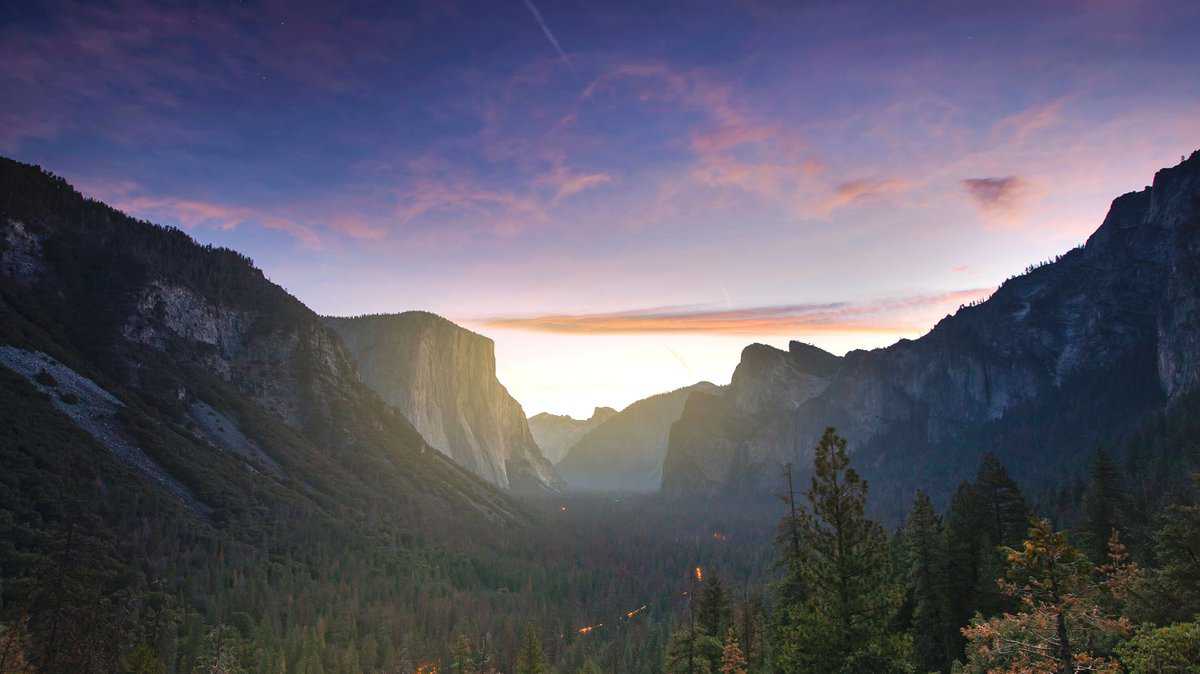
2. Valley View
While Tunnel View draws the crowds, Valley View offers a more intimate and serene sunrise experience.
Imagine this: the first light of dawn caressing the majestic Yosemite Valley, reflected in the tranquil waters of the Merced River. This is Valley View.
Why Choose Valley View for Sunrise:
- Escape the Crowds: Enjoy a peaceful and less crowded alternative to the bustling Tunnel View.
- Ground-Level Perspective: Experience the grandeur of Yosemite Valley from a unique, intimate vantage point.
- Merced River Reflections: Capture stunning images of the sunrise colors dancing on the water’s surface.
- A Full Day’s Adventure: With nearby walking trails and refreshing swimming holes, Valley View is the perfect starting point for a full day of exploration.
Tips for a Perfect Valley View Sunrise:
- Arrive Early, Even Without the Crowds: Limited parking means securing your spot early is still crucial.
- Embrace the River’s Reflection: Position your tripod near the Merced River for captivating sunrise photos with mirrored colors.
- Pack for a Day of Exploration: Bring your swimsuit, hiking boots, and a picnic lunch to make the most of Valley View’s surroundings.
Finding Valley View:
- Located on the Valley Loop: This one-way road offers a scenic drive through Yosemite Valley.
- Look for Subtle Signage: Valley View isn’t as prominently marked as other viewpoints, adding to its secluded charm.
- Distance: It’s located approximately 4.5 miles down the Valley Loop.
Valley View is a hidden gem for those seeking a tranquil and intimate sunrise experience in Yosemite. Prepare to be captivated by the beauty of a new day dawning over Yosemite Valley.
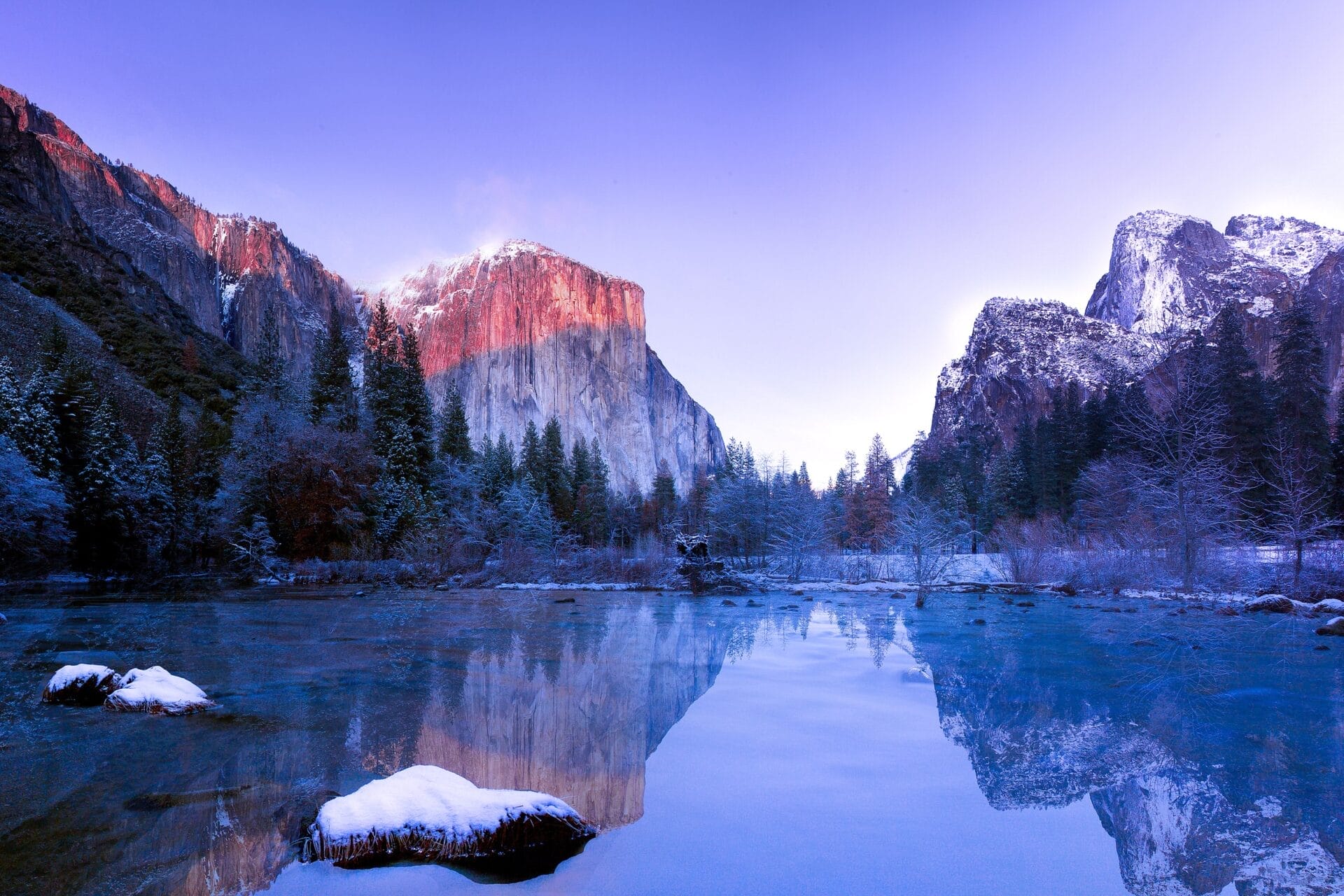
3. Glacier Point
Imagine standing at an elevation of 7,214 feet, the world spread out before you like a giant, awe-inspiring map.
As the first rays of sunlight creep over the horizon, they paint the iconic landmarks of Yosemite Valley in a symphony of golden light. This is the magic of a Glacier Point sunrise.
Glacier Point Road is NOW OPEN! As of May 14, 2024, you can once again experience the wonder of driving to Glacier Point.
However, be aware that conditions can change rapidly, and some trails may remain closed.
Why Glacier Point is a Sunrise Must-Do:
- Unrivaled Views: From towering granite cliffs to cascading waterfalls, Glacier Point offers a panoramic perspective of Yosemite Valley that’s simply breathtaking.
- Iconic Landmarks from Above: Witness Half Dome, Yosemite Falls, Vernal Fall, and Nevada Fall from a whole new angle.
- Accessible Grandeur: Once you’ve made the drive (or hike), the viewpoint is just a short walk from the parking lot.
Tips for a Memorable Glacier Point Sunrise Experience:
- Check Road Conditions: Glacier Point Road’s accessibility is highly dependent on weather. Visit the official Yosemite National Park website or call for the latest updates before you go.
- Make Reservations (If Needed): Weekend entry to Yosemite requires reservations between 5 am and 4 pm. Plan ahead to avoid disappointment.
- Dress in Layers: The high elevation means cooler temperatures, even in summer.
- Arrive Early (Especially During Peak Season): Secure a prime parking spot and soak in the pre-dawn ambiance.
Getting to Glacier Point:
- By Car (Road Currently Open): Enjoy a scenic 45-minute to 1-hour drive from Yosemite Valley along Glacier Point Road. Remember, conditions can change, so check before you go!
Even Though the Road is Open, Be Prepared:
- Trail Closures: Some trails, including the Four Mile Trail, may remain closed, even with the road open. Check for updates.
- Varying Conditions: Be prepared for snow, ice, and muddy trails, even in spring and early summer. Sturdy footwear is a must!
Glacier Point offers a sunrise experience unlike any other. Plan ahead, pack appropriately, and prepare to be amazed by the raw beauty of Yosemite.
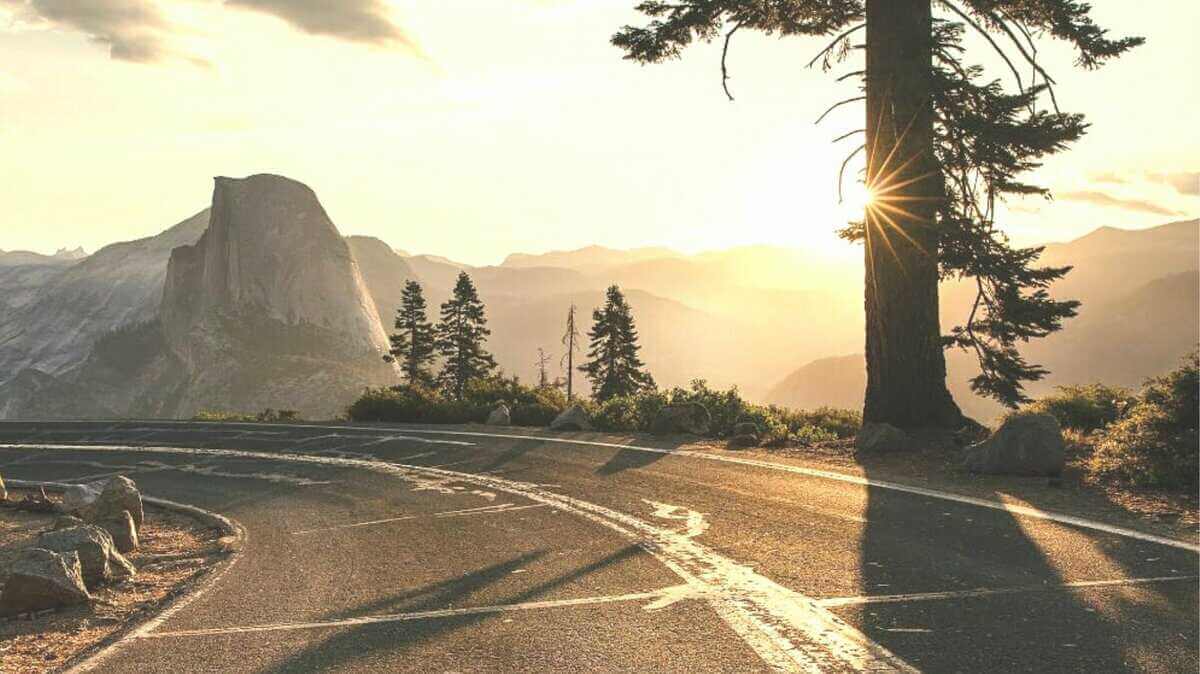
4. Panorama Trail
This is not your average sunrise experience.
The Panorama Trail is a challenging, rewarding journey reserved for experienced hikers seeking a truly unforgettable perspective of Yosemite’s grandeur.
Picture this: standing high above the valley floor, surrounded by towering peaks, as the first light of dawn paints the landscape in breathtaking hues.
Why Panorama Trail is a Sunrise Hike Unlike Any Other:
- Above-It-All Views: Experience Yosemite’s vastness from a mountaintop perspective, where soaring peaks and endless horizons dominate the view.
- A True Test of Endurance: This strenuous 8.5-mile (one-way) hike with 3,200 feet of elevation gain demands a high level of fitness and preparedness.
- A Photographer’s Paradise: Capture unique, wide-angle shots of Yosemite’s iconic landmarks bathed in the soft glow of sunrise.
- Solitude and Serenity: Embrace the tranquility of the trail and the sense of accomplishment that comes with reaching such a stunning viewpoint.
Essential Tips for a Safe and Rewarding Panorama Trail Sunrise Hike:
- Train Accordingly: This is a demanding hike! Prepare with several weeks of prior hiking experience, including uphill climbs and longer distances.
- Start Early (Very Early!): Factor in the 6+ hour hiking time (one-way) to ensure you reach the viewpoint well before sunrise.
- Check Trail Conditions and Weather: The Panorama Trail can be treacherous, especially with snow and ice. Visit the official Yosemite National Park website or call for the latest updates.
- Pack Essentials: Bring plenty of water (at least 3 liters), high-energy snacks, layers of clothing, a headlamp, a map, and a first-aid kit.
- Know Your Limits: This hike is not for everyone. Turn back if you experience any difficulty or if conditions become unsafe.
Getting to the Panorama Trailhead:
- From Glacier Point (Currently Most Accessible Option): With Glacier Point Road now open, start your hike from the parking lot, adding approximately 4 miles (each way) to your journey.
- From the Valley Floor: This option significantly increases the difficulty and length of the hike. It’s crucial to have extensive hiking experience and be well-prepared for this strenuous trek.
The Panorama Trail sunrise hike is not for the faint of heart. But for those who seek adventure and unparalleled views, it’s an experience that will stay with you long after the sun sets on your Yosemite adventure.
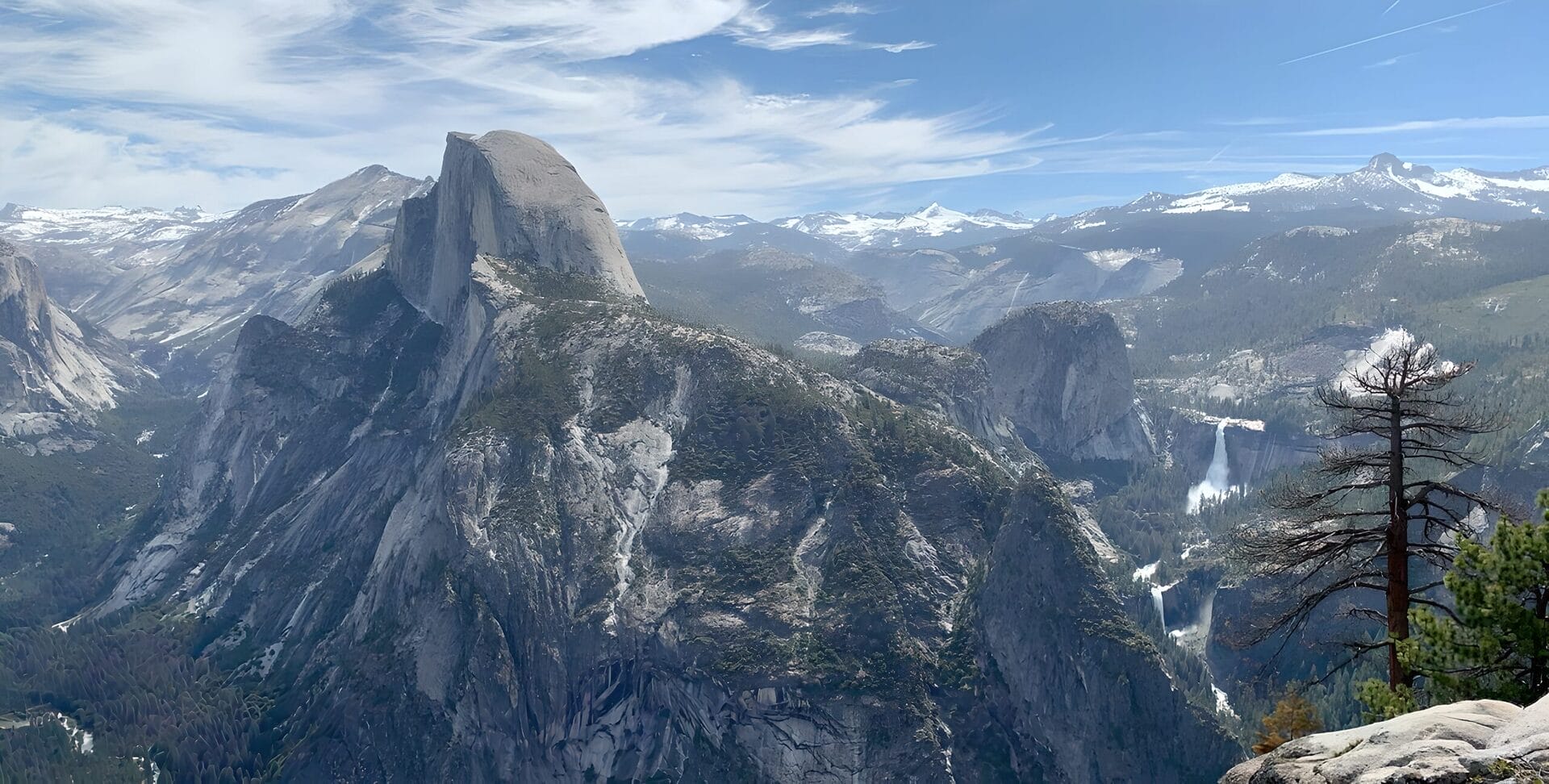
5. Big Oak Flats Vista Point
Escape the crowds and discover a hidden gem!
Big Oak Flats Vista Point offers stunning sunrise views of Yosemite Valley, without the typical throngs of visitors.
This secret spot, nestled along Highway 120, is a photographer’s dream, offering a unique perspective of the park’s iconic landscapes.
Why Choose Big Oak Flats for Sunrise:
- Seclusion and Tranquility: Embrace the peacefulness of this less-traveled viewpoint as you witness the valley awaken with the rising sun.
- Unique Vantage Point: Capture panoramic views of Yosemite Valley, including the meandering Merced River, from a less-photographed angle.
- A Scenic Detour: The drive along Big Oak Flat Road is an adventure in itself, winding through picturesque forests and offering glimpses of hidden waterfalls.
Tips for a Memorable Big Oak Flats Sunrise Experience:
- Plan Your Route: Be intentional about finding this hidden gem! Search for “Big Oak Flats Vista Point” or “vista point along Highway 120” on your navigation app.
- Embrace the Drive: The journey to Big Oak Flats is part of the experience. Savor the scenic beauty of Big Oak Flat Road, but be prepared for its winding, sometimes steep, nature.
- Arrive Early (Just in Case): While less crowded, it’s always wise to arrive early to secure the best spot, especially during peak season.
- Capture the Layers: Use a wide-angle lens to capture the layered effect of the valley, with the Merced River winding through the heart of it all.
Finding Big Oak Flats Vista Point:
- Located on Highway 120: This lesser-traveled route offers a scenic alternative to the often-congested Highway 140.
- Look for Pullouts: As you drive along Highway 120, keep an eye out for designated pullouts or vista points.
Big Oak Flats Vista Point is a hidden gem for those seeking solitude, unique perspectives, and a sense of adventure in their Yosemite sunrise experience. Make the detour, embrace the journey, and prepare to be rewarded with breathtaking views.
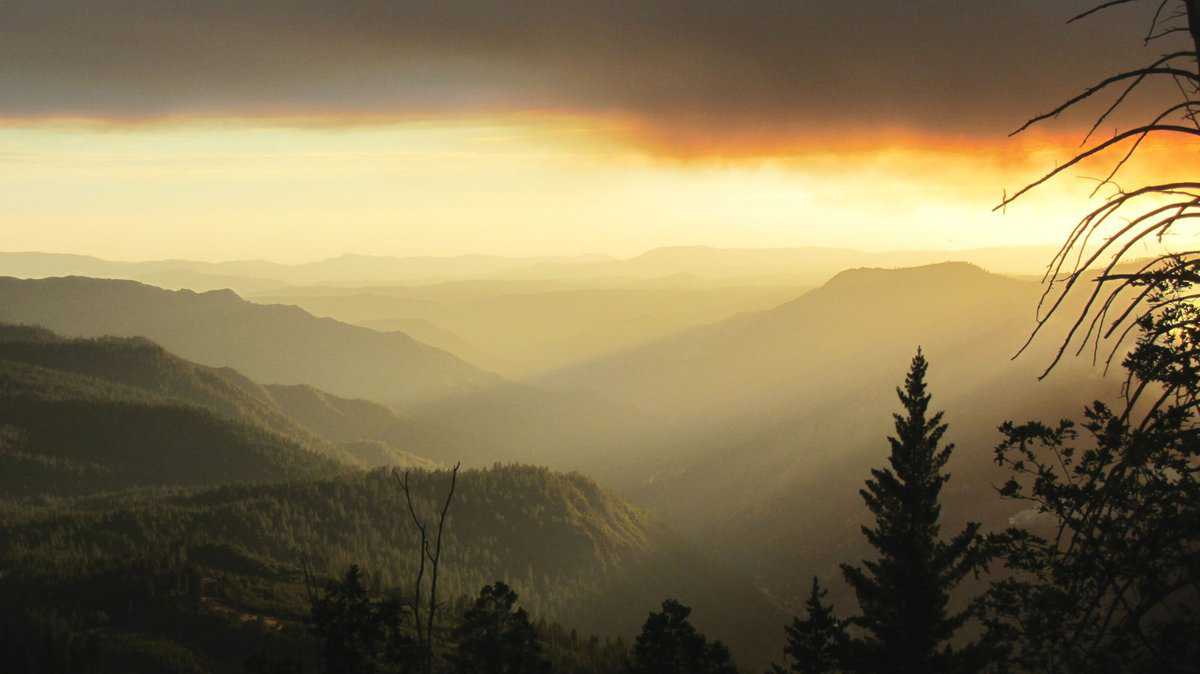
Sunrise in Yosemite: A Photography Guide
A Yosemite sunrise is a sight to behold, and capturing its beauty through photography is an art form in itself.
Whether you’re a seasoned pro or using your phone, these tips will help you capture stunning sunrise images you’ll cherish forever.
Consider a private tour for a customized and intimate Yosemite experience. These tours often offer access to exclusive areas and personalized guidance from expert photographers.
Pre-Sunrise Preparation is Key:
- Timing is Everything:
- Verify the exact sunrise time for your chosen location the day before.
- Arrive at least 30 minutes before sunrise to set up and soak in the pre-dawn atmosphere.
- Scout Your Location:
- Choose a spot with unobstructed views of the eastern horizon.
- Consider framing elements like trees, rocks, or reflections to add depth and interest to your photos.
- Rest Up:
- Aim for a full night’s sleep to ensure you’re alert and ready to capture those fleeting moments of magic.
Essential Gear and Settings:
- Tripod: A must-have for sharp photos, especially in low-light conditions.
- Camera with Manual Mode (Ideal): Allows greater control over exposure settings.
- Shoot in RAW: Captures more data, providing greater flexibility during editing.
- Use a Low ISO (100-400): Reduces graininess (noise) for cleaner images.
- Experiment with Shutter Speed: Longer exposures (1-30 seconds) can create beautiful motion blur effects in clouds or water.
- Phone Camera Tips:
- Charge Fully: Don’t let a dead battery ruin your shot!
- Use a Tripod or Stabilizer: Essential for avoiding blurry images, especially with longer exposures.
- Explore Manual Mode (If Available): Experiment with exposure settings for creative control.
- Utilize HDR: Capture a wider range of light and detail, especially in high-contrast scenes.
Yosemite Sunrise Photography Considerations:
- Mountainous Terrain: The sun’s position relative to the peaks changes throughout the year, impacting the direction and quality of light. Scout your location beforehand and consider how the terrain might enhance or obstruct your shot.
- Snow and Glare: If shooting in winter or spring, be mindful of potential glare from snow. Use a lens hood and adjust your composition accordingly.
- Golden Hour and Beyond: The hour after sunrise (and before sunset) is known as “golden hour” for its soft, warm light. Don’t pack up too quickly! Experiment with different compositions as the light changes.
A Few Extra Tips:
- Focus on Composition: Follow the rule of thirds, use leading lines, and find interesting foreground elements.
- Tell a Story: What emotions or experiences do you want your photos to convey? Use light, composition, and subject matter to tell your unique Yosemite sunrise story.
- Practice Patience: Sunrise photography is about capturing fleeting moments of beauty. Be patient, experiment, and enjoy the process!
Capturing stunning sunrise photos in Yosemite is a rewarding experience. With careful planning, the right equipment, and a little creativity, you’ll be well on your way to creating photographic memories that last a lifetime.
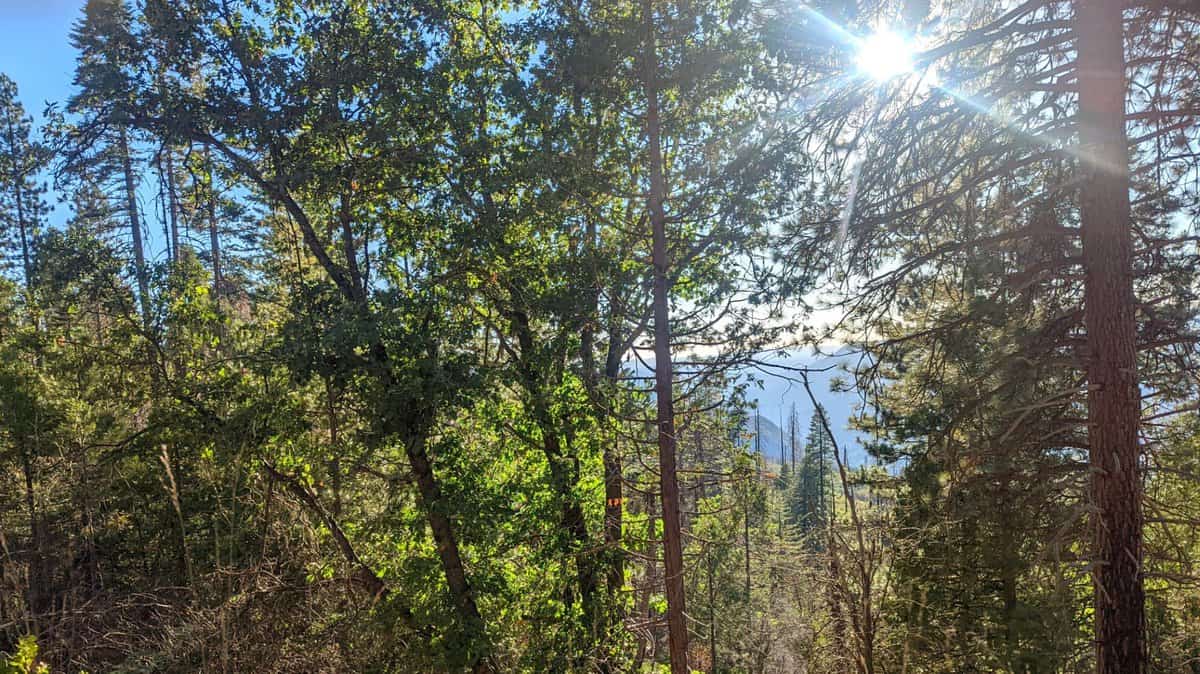
Where to Stay for Optimal Sunrise Viewing
Yosemite offers a range of lodging options, from cozy lodges to rustic campgrounds.
Staying within the park eliminates the early morning drive and allows you to fully immerse yourself in the sunrise experience.
Options include:
- Lodges: Yosemite Valley Lodge and the Ahwahnee Hotel offer comfort and convenience.
- Campgrounds: Experience Yosemite’s wilderness firsthand, but book well in advance, especially during peak season.
- Private Rentals: Cabins and vacation homes offer a home-away-from-home experience.
We’d love to hear about your favorite Yosemite sunrise experiences! Share your tips, stories, and favorite viewpoints in the comments below.
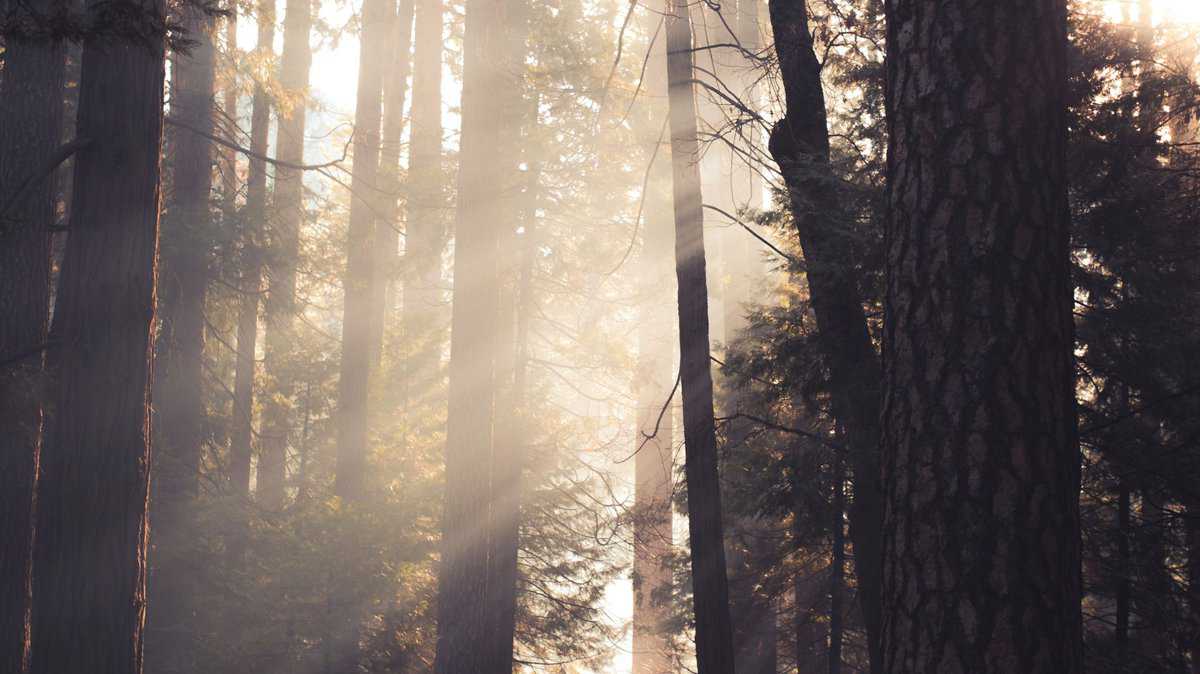
Yosemite Sunrise FAQs
Where is the best place to watch the sunrise in Yosemite?
While all the locations mentioned offer stunning views, for the absolute best sunrise experience in Yosemite, head to Glacier Point.
Can I enter Yosemite at 5am?
Yes, Yosemite National Park is open 24/7, 365 days a year. You can enter and exit the park at any time. However, keep in mind that some roads and facilities may have limited hours.
Is Glacier Point better at sunrise or sunset?
Glacier Point is spectacular at both sunrise and sunset! Sunrises offer a soft, ethereal light show on Half Dome, while sunsets bathe the valley in warm, vibrant hues. Ultimately, the “better” time depends on your preference.
What time is sunrise in Yosemite?
Sunrise times vary greatly throughout the year, ranging from approximately 5:30 am in summer to around 7:30 am in winter. Keep in mind that your chosen location and elevation within the park will also influence the exact time the sun crests the horizon. Check a reliable sunrise and sunset calculator closer to your trip, using specific locations within Yosemite for accurate times.
What is the elevation in Yosemite?
Yosemite’s diverse terrain means a wide range of elevations. The valley floor sits around 4,000 feet (1,200 meters) above sea level, while iconic peaks like Half Dome soar to approximately 8,800 feet (2,700 meters). Be prepared for cooler temperatures and potential altitude effects, especially at higher elevations.
Do I need a reservation to enter Yosemite?
Reservations are required to enter Yosemite between mid-May and the end of September, from 6:00 am to 4:00 pm. However, you do not need a reservation if you enter before 6:00 am or after 4:00 pm. This means you can enjoy those magical sunrise views without a reservation!


Leave a Reply